VIIRS Flood Mapping - Total Operational Weather Readiness - Satellites (TOWR-S)
VIIRS Flood Mapping
About
The VIIRS Flood Mapping (VFM) product depicts flood extent (floodwater fraction) inferred from imagery produced by the Visible and Infrared Imaging Radiometer Suite (VIIRS) aboard polar-orbiting satellites in the Joint Polar Satellite System (JPSS). Here, flood is defined as an overflow of water that submerges land that is normally dry. The floodwater detected in VFM includes disastrous floodwater (caused by ice-jam/snow-melting or intensive rainfall that brings about damages or economic loss), and non-disastrous floodwater (such as tides, agriculture-related water and other hydrologic-activity-related water).
The VFM product estimates each pixel’s floodwater fraction – the degree (0% to 100%) to which each VIIRS pixel is covered by floodwater. Alternatively, VFM may indicate that a pixel is normally water (lakes, rivers, oceans), or is currently covered by snow, ice, clouds, or cloud shadows. (For pixels with no flooding, water, cloud cover, snow, or ice, VFM indicates whether the predominant landcover is bare land or vegetation.) Each VIIRS pixel is about 375x375 meters, so VFM offers a much more detailed view of flood extent than is possible with the current generation of geostationary imagers.
VFM is available for 8 different regions defined by longitude / latitude bounds (depicted below):
Alaska, North West, Missouri Basin, North Central, North East, South West, West Gulf, South East
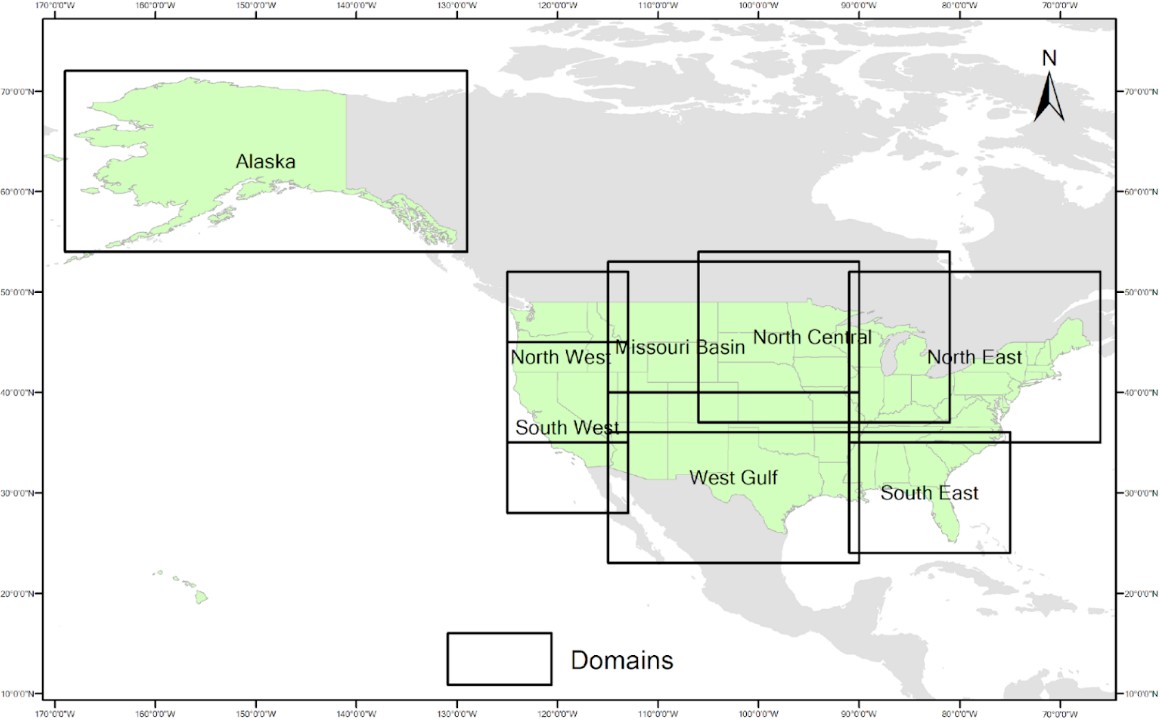
The 8 regions defined for VIIRS Flood Maps
Limitations
Cloud Cover: Cloud cover and cloud shadows prevent flood detection.
Daytime Only: Flood detection is only possible in daylight; each JPSS satellite observes each of the 7 CONUS regions (or a portion thereof) about twice each afternoon. (Alaska flood maps are more frequent, outside of winter months.)
Regions vs Swaths: The swaths observed by JPSS satellites are not congruent with the 8 regions; so at certain times flood information may be available for only a portion (“sliver”) of a region.
CAVE Memory Capacity: Because each VFM region’s data grid consists of several thousand rows and columns, displaying several regions at once can fill the memory allocated to CAVE. For this reason, AWIPS sites are normally configured to receive and display VFM for only one or two of the 8 regions.
AWIPS
Location: /data_store/polar/%Y%m%d/%H/
Color Maps: FloodMapCast.cmap
Sampling: Surface Flag, % Flooded
Quality Flags: (part of WaterDetection variable)
Technique: Monitoring the spatial distribution of floodwater is valuable for National Weather Service (NWS) and River Forecast Center (RFC) forecasters with respect to flood forecasting applications. Government decision-makers also benefit from the product by determining the severity of flooding in relation to disaster mitigation efforts. VFM can also be used to help locate ice jams and indicate the dynamic change of ice-jam floods by observing ice movement and floodwater evolution. Additionally, VFM may assist in snowmelt runoff analyses and flood forecasting by observing snow-melt water flow and accumulation.
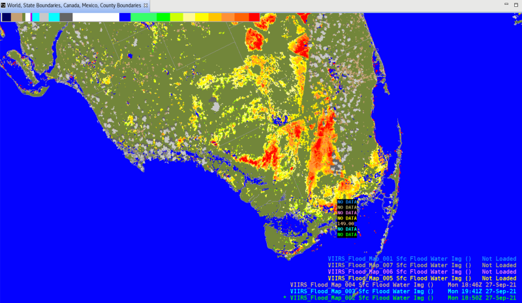
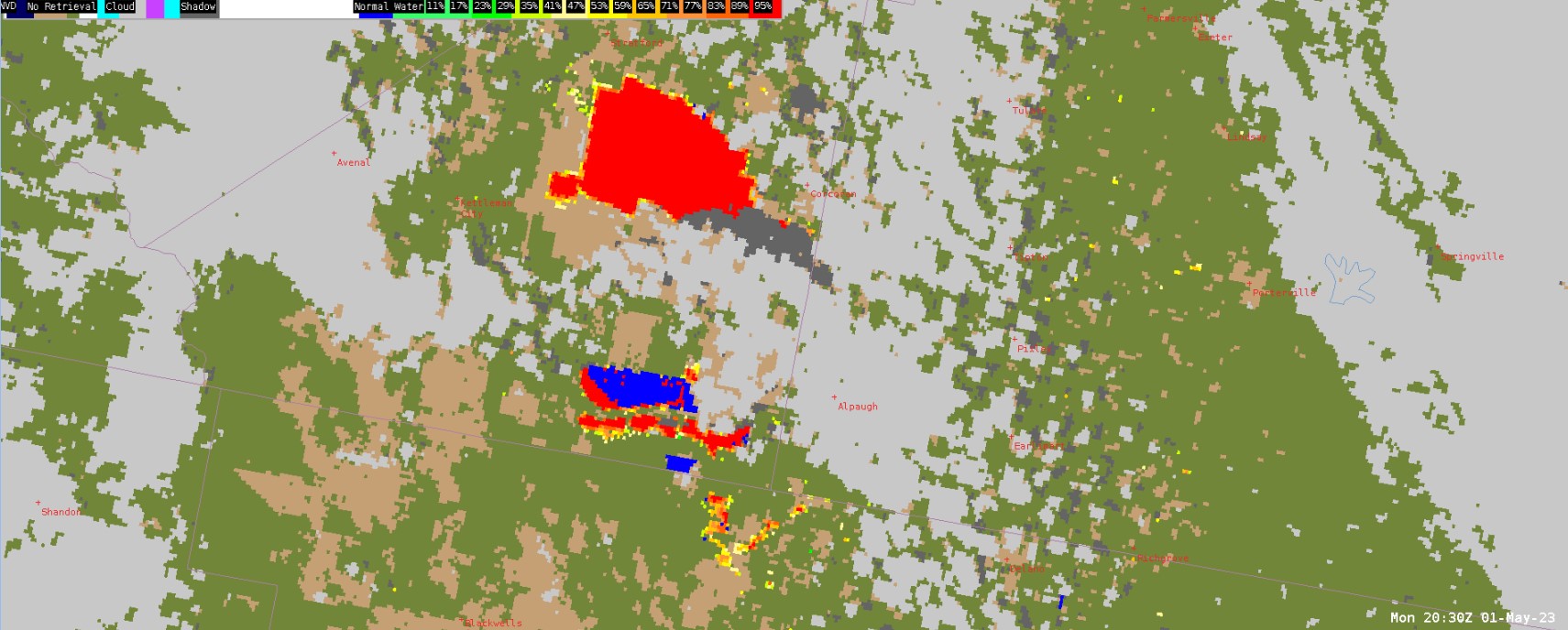
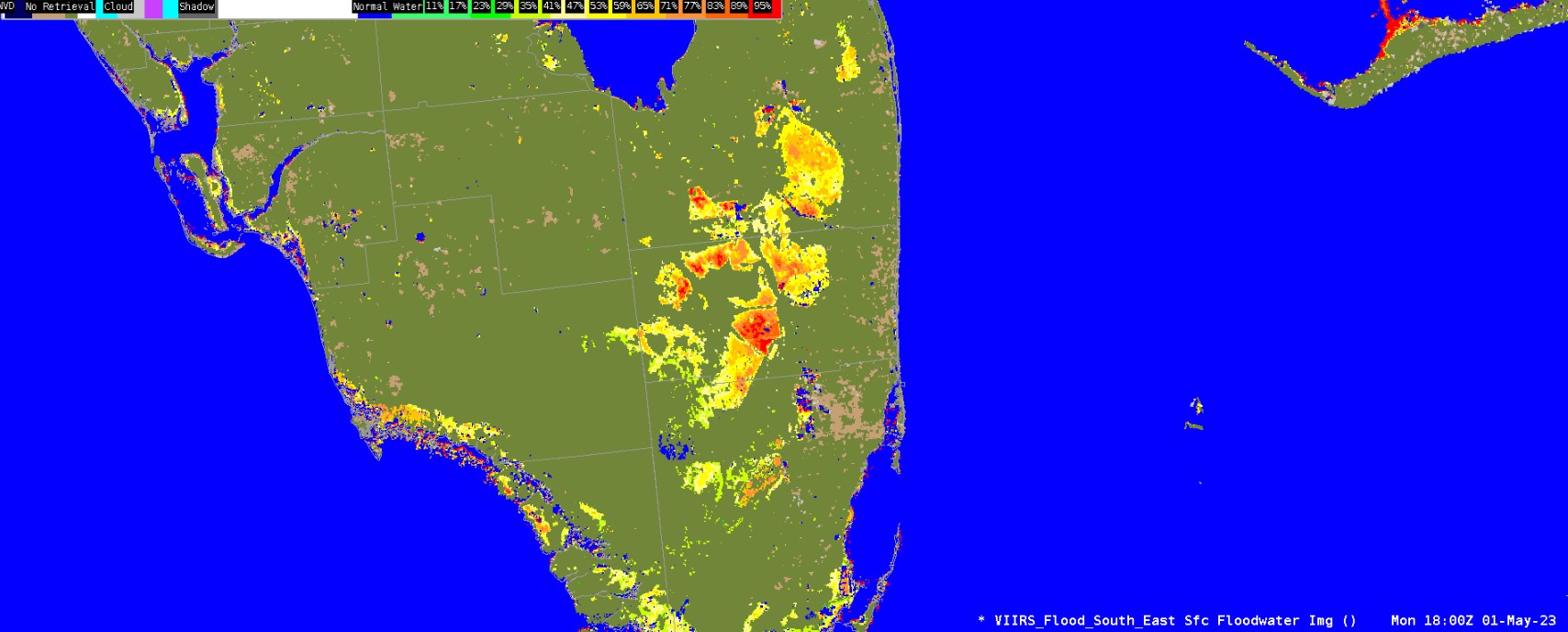
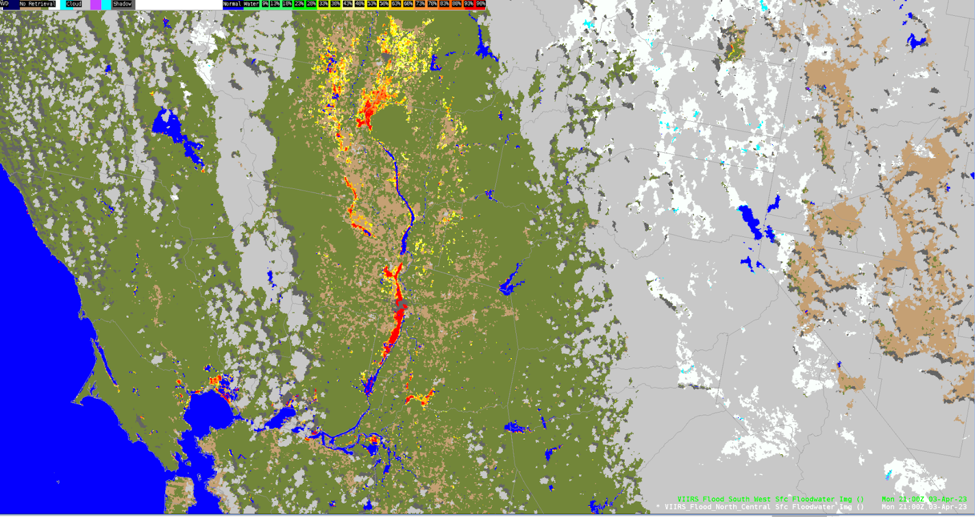
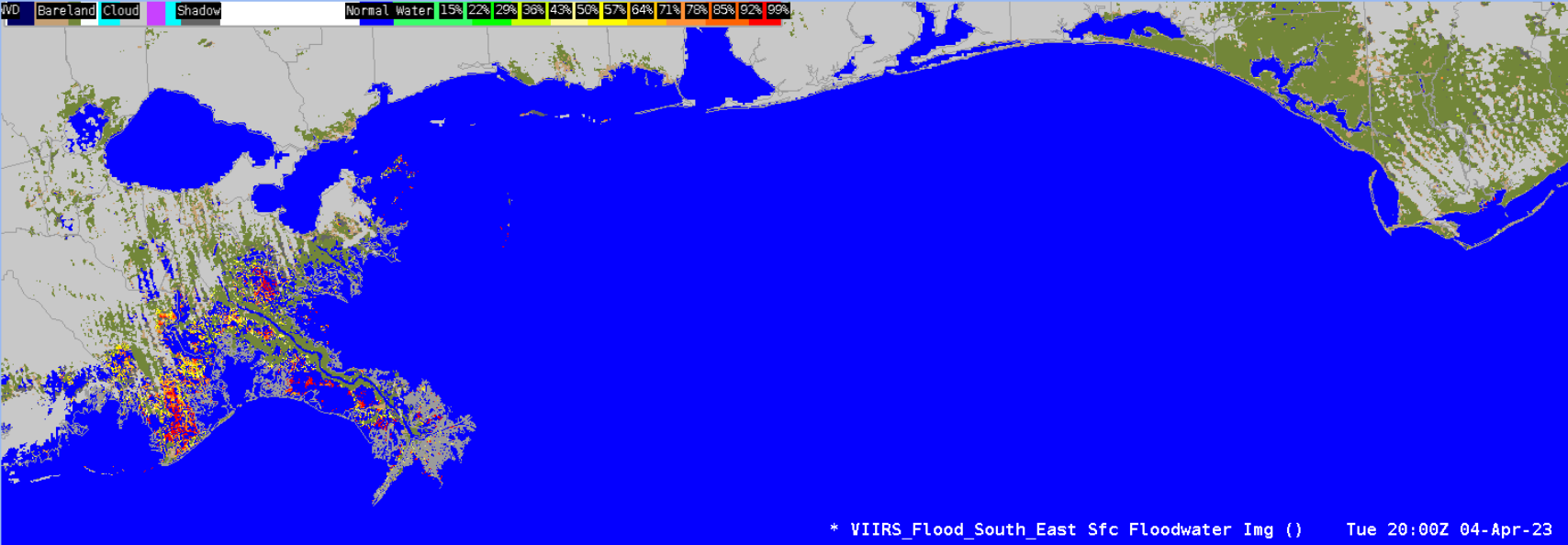
AWIPS Technical Details
| Sector | VIIRS Polar Satellite, divided into 8 regions over the Conterminous US and Alaska |
| Refresh Rate | Data arrives as granules from a Polar Orbiting Satellite – usually two per day for each region, between ~18:00z and ~22:00z. |
| Size | Variable file sizes; ~45 files/day; ~120MB/day |
| Resolution | 375m |
| Data Source | PDA |
| Projection | Available in lon-lat grids covering each of 7 CONUS regions + Alaska |
| Storage Location | /data_store/polar/%Y%m%d/%H/ |
| WMO Header | N/A (distributed over Regional LDM) |
| Product Short Name | VFM_NWS_Mosaic |
| Data Path | PDA → AWC → Regional LDM |
| AWIPS Configuration | TOWR-S RPM 23+; [site]/grid/netcdf/viirs-flood-map/viirs-flood-map_multiregion_multidataset_v3.xml; [site]/colormaps/Floodmaps/FloodMapCast.cmap |
| AWIPS Plugin | netcdfgrid |
| Edex Purge Rule | 2 days ([site]/purge/gridPurgeRulesViirsFlood.xml) |
Instructions for configuring each site to receive VFM for specific regions may be found here.
Use Cases & More
More information can be retrieved from the Algorithm Theoretical Basis Document, Quick Guide, and a 2016 scientific overview.
Point of Contact: Derek VanPelt
This page was last updated on March 26, 2024.




